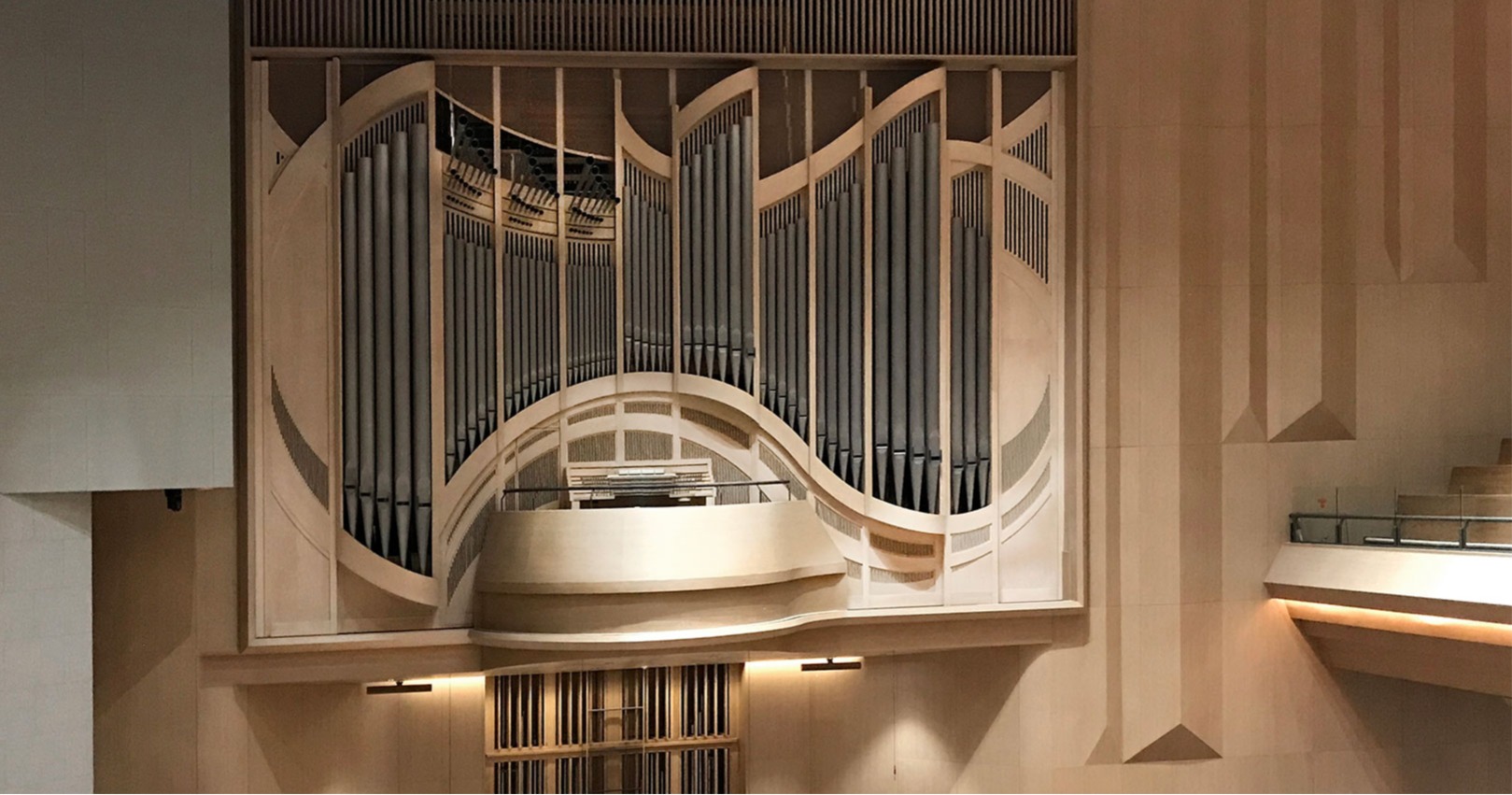

Seoul, South Korea

Established as the first Korean protestant church, Saemoonan Presbyterian built a new church on Sinmunno, Gwanghwamun, celebrating its 132nd anniversary. Considered as the Mother of all churches in the country, the new church is a large multi-story building offering many services and where functionalism is the top priority. It was articulated around four major themes: 1. The historicity as the mother church of Korean Protestant churches, 2. The symbolism of doors opened to heaven, 3. The spatiality of expressing Christ as light, 4. Presenting a water space as a meaning of baptism and harmony. “Loving God”and Loving Neighbors” themes in mind, the shape of the new building resembles a mother stretched out toward the sky.
While preparing the organ specifications, imagining how the organ would sound based upon what will be played and how it will be used for worship and for other musical activities anticipated by the parish becomes the basis for selecting stops and how they will fit into the tonal ensemble.
We followed an approach which will ensure that the organ will have stylistic unity throughout, providing an outstanding design to complement the building architecture and offering sustainable and reliable mechanisms. The visual design was done in collaboration with Seoinn Design Group.
The new Casavant organ at Saemoonan Presbyterian Church bears Opus number 3906. It is a four-manual and Pedal instrument containing 63 stops, 79 ranks and a total of 4,343 pipes. The organ is conceived in French Symphonic style and speaks on the longest axis of the church.
In order to achieve the best tonal cohesion, proper balances and tonal egress, the organ’s layout is essentially classical. On the lower level, slightly above the church’s choir, is the expressive Positif division. On the second level, above the attached mechanical action console, we find the Grand Orgue, with the expressive Récit behind and slightly lower. The expressive Solo division, together with the Trompette-en-Chamade, is on the top level. The Pédale is divided on both sides.
Each division provides complete choruses of stops, appropriate and essential for each of them: Grand and Petit Plein-Jeux, mounted Cornet, generous foundations, two divided jeux de tierce – one being of harmonic flutes - mutations up to one-foot, complete batteries of reeds, Hautbois, Voix humaine, Clarinette, Cor français, etc, and undulating stops, are among the tonal resources.
The instrument is equipped with two actions, permitting an attached console with mechanical action and a second moveable console with electric action. Each of the 4,343 pipes is designed with the utmost care, taking into consideration their place within the organ and the planned acoustics of the building. Every pipe is voiced so that it will contribute the best musical achievement in creating sounds which are both individually pleasing and eminently able to blend. The organ is capable to generate generous power while offering an assorted palette of tones and ensembles displaying a particularly warm texture.
The attentive care in details while designing all aspects of the instrument is an expression of our goal for easy maintenance, reliability and longevity.